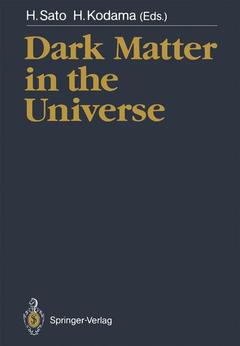Description
Dark Matter in the Universe, Softcover reprint of the original 1st ed. 1990
Proceedings of the Third Nishinomiya-Yukawa Memorial Symposium, Nishinomiya City, 10–11 November 1988
Coordinators: Sato Humitaka, Kodama Hideo
Language: English
Subject for Dark Matter in the Universe:
Keywords
Publication date: 04-2012
137 p. · 17x24.4 cm · Paperback
137 p. · 17x24.4 cm · Paperback
Description
/li>Contents
/li>
"Dark matter" was first introduced by Zwicky in 1933 to resolve a discrepancy be tween the dynamical and luminous masses of the Coma cluster. In spite of tremen dous developments in observations and various theoretical attempts, the problem of dark matter has not been resolved but has rather deepened in mystery. Though it is now certain that dark matter constitutes a dominant part of the matter in the universe, its distribution and accurate abundance are not known well. Though many people believe that it consists of non-baryonic matter, no one can reject the bary onic candidate for sure. Though it may have surely played important roles in the formation of galaxies and their large-scale distribution, there exists no theory which is consistent with all the observational facts. Resolution of this frustrating situation is one of the urgent problems in astronomy, cosmology and particle physics. One obstacle for this is the diverse nature of the problem. More researchers are therefore invited to participate in this rich field. This volume contains lectures presented at the third N ishinomiya-Yukawa Memo rial Symposium on "Dark Matter in the Universe" held on 10-11 November 1988, in Nishinomiya City. This symposium was intended to present an introduction of the dark matter problem to young newcomers, and physicists and astrophysicists who had not specialized in this field. These proceedings will provide them with a comprehensive and current survey of the problem.
Tracing Large-Scale Structure in the Universe.- Cosmic Background Radiation in the Submillimeter Range.- Mass Density of the Universe and Dark Matter.- On the Origin of Absorption-Line Systems of Quasars.- Dark Matter and Galaxy Formation.- Search for WIMPs.- Solar and Cosmic Axion Hunting.- Dark Matter and Primordial Nucleosynthesis.- Concluding Remarks: Yukawa and Dark Matter.- Index of Contributors.
© 2024 LAVOISIER S.A.S.




